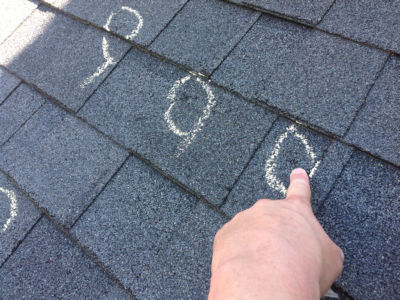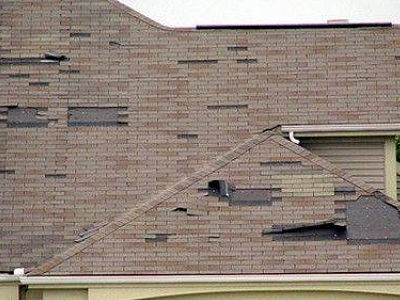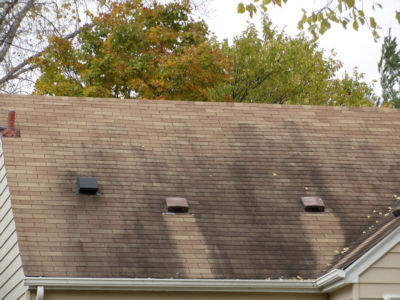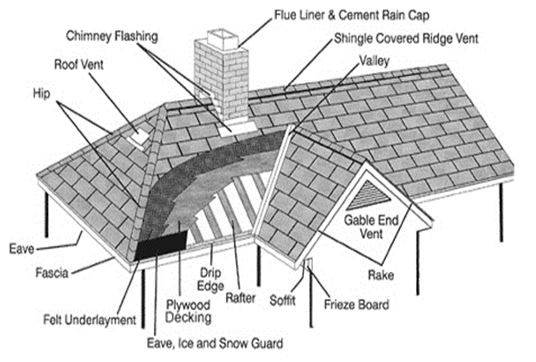Pipe Boots: Or vent boots come in many styles and are designed to install over the vent pipes that stick out of your roof to create a watertight seal and are the cause of about 80% of all roof leaks. The ones that need to be maintained are the rubber or neoprene ones because over time they will become dry and crack and cause a water entry point and should be checked once a year.
Chimney Base Flashing: A corrosion-resistant sheet metal installed at the base of a chimney to prevent leaks.
Eaves: The lower border of a roof that overhangs the wall.
Fascia: The vertical board at the eaves oftentimes covered with vinyl or aluminum.
Horizontal Siding: Provides style and functionality. Available in various materials, colors, textures, and designs.
Housewrap: Material designed to allow moisture to escape and to prevent air from coming in.
Lookout: A horizontally positioned board used to brace the trusses of a roof .
Rake: The outer edge of a roof from the eave to the ridge.
Ridge Beam: The top support beam between opposite slopes or sides of a roof.
Ridge Shingles: Shingles used to cover the horizontal external angle formed by the intersection of two sloping roof planes.
Drip Edge: A narrow strip of non-corrosive, non-staining, finishing material installed along the eaves and rakes to allow water run-off to drip clear of underlying construction. On eaves where gutters are present, this material is commonly called gutter apron.
Roof Sheathing (boards): The structural base of a roof. Also called the roof deck or decking.
Roof Sheathing (plywood): The structural base of a roof. Also called the roof deck or decking.
Roof Truss (rafters): The framework that supports a roof.
Shingle Siding: A siding option typically manufactured from red cedar, which weathers to a silvery gray or medium brown, depending on local climate; and white cedar, which weathers to a silvery gray.
Shingles: The outermost covering of a roof. Composition shingles are manufactured from materials “composed” of fiberglass, modified asphalt and mineral granules. Wood shingles and shakes (shakes are split rather than sawn) are made from western red cedar. Other roofing options include clay and concrete tiles, slate, metal, mineral roll roofing, and tar and gravel.
Soffit: The finished underside of the eaves. Soffit panels are available in wood, vinyl, and aluminum.
Step Flashing: A corrosion-resistant sheet metal used to waterproof the angle between a chimney, skylight, dormer, etc. and a sloping roof.
Underlayment: An asphalt-impregnated felt laid under most roofing materials as a secondary water barrier. Felt is classified by weight per “square,” (100 sq. ft.) usually 15 or 30-pound. Underlayment is also called tar paper or felt.
Valley: The intersection of two sloping roofs joining at an angle to provide water runoff.
Valley Flashing: Made from aluminum or galvanized steel, this additional water barrier is installed after the roof and valley have been covered with underlayment.
Vent Flashing: A flat piece of pre-cut sheet metal installed on top of the underlayment to prevent leaks from occurring where roof vents are present.
Vertical Panel Siding: Plain, patterned, or grooved panels of plywood or hardboard that provide style and functionality.
Wall Sheathing: The first covering of boards on the outside wall of a frame house.





